Humped Flow Channel in Drum Magnetic Separator Leads to Enhanced Recovery of Magnetic Seeds in Magnetic Flocculation Process
Abstract
1. Introduction
2. Materials, Equipment, and Methods
2.1. Raw Magnetic Seeds
2.2. Drum Magnetic Separator and Separation Principle
2.3. Experimental Methods
3. Experimental Results
3.1. Experimental Conditions
3.2. Product Analysis
4. Analysis of Mechanism
4.1. Simulation of Magnetic and Flow Fields
4.2. Estimation of Body Forces Acting on Particles
4.3. Trajectory of Particles
5. Conclusions
Supplementary Materials
Author Contributions
Funding
Data Availability Statement
Conflicts of Interest
References
- Sun, Y. Research progress of magnetic flocculation in water treatment. Magnetochemistry 2024, 10, 56. [Google Scholar] [CrossRef]
- Ellis, E.P.; Cathcart, A.H. Selection, installation, startup and testing of the world’s first full-scale comag phosphorus reduction tertiary treatment system. Proc. Water Environ. Fed. 2008, 13, 3602–3621. [Google Scholar] [CrossRef]
- Mohamed Noor, M.H.; Wong, S.; Ngadi, N.; Mohammed Inuwa, I.; Opotu, L.A. Assessing the effectiveness of magnetic nanoparticles coagulation/flocculation in water treatment: A systematic literature review. Int. J. Environ. Sci. Technol. 2022, 19, 6935–6956. [Google Scholar] [CrossRef]
- Hu, J.W.; Li, J.; Chen, Y.; Chen, X.L. Application of magnetic flocculation technology in enhanced treatment of polluted river water. China Water Wastewater 2011, 27, 1000–4602. (In Chinese) [Google Scholar]
- Xie, C.; Li, X.; Tang, Z.; Chu, W.; Li, H. Enhanced combined sewer overflow treatment by rapid magnetic flocculation-magnetic sedimentation: Efficiency and mechanism. Environ. Sci. Water Res. Technol. 2024, 10, 1586–1594. [Google Scholar] [CrossRef]
- Zhou, Q.; Yu, Z.; Ma, Y. Review on the application of magnetic flocculation technology in water treatment. IOP Conf. Ser. Earth Environ. Sci. 2019, 295, 042107. [Google Scholar] [CrossRef]
- Li, Y.; Wang, J.; Zhao, Y.; Luan, Z. Research on magnetic seeding flocculation for arsenic removal by superconducting magnetic separation. Sep. Purif. Technol. 2010, 73, 264–270. [Google Scholar] [CrossRef]
- Du, C.; Hu, Y.; Han, H.; Sun, W.; Hou, P.; Liu, R.; Wang, L.; Yang, Y.; Liu, R.; Sun, L.; et al. Magnetic separation of phosphate contaminants from starch wastewater using magnetic seeding. Sci. Total Environ. 2019, 695, 133723. [Google Scholar] [CrossRef]
- Zhang, L.; Wang, B.; Zhang, Q. Enhanced treatment of oily wastewater through modified magnetic seeds for magnetic flocculation. Int. J. Environ. Sci. Technol. 2024, 21, 7717–7732. [Google Scholar] [CrossRef]
- Wang, X.X.; Wu, L.; Zhou, P.; Li, C.; Zhao, L.B.; An, W.; Chen, Y. Harvesting of polycyclic aromatic hydrocarbons (pahs)-degrading bacteria by magnetic flocculation. Appl. Mech. Mater. 2014, 665, 563–566. [Google Scholar] [CrossRef]
- Yiacoumi, S.; Rountree, D.A.; Tsouris, C. Mechanism of particle flocculation by magnetic seeding. J. Colloid Interface Sci. 1996, 184, 477. [Google Scholar] [CrossRef]
- Kurinobu, S.; Uesugi, J. Performance of hgms filter and recycling of magnetic seeding material on magnetic seeding method. IEEE Trans. Magn. 1999, 35, 4067–4069. [Google Scholar] [CrossRef]
- Du, H.; Zhang, F.; Lv, F.M. Experimental study on magnetic flocculation-magnetic disc separation technique for chaohu eutrophication of water treatment. Technol. Water Treat. 2009, 35, 86–90. [Google Scholar]
- Arol, A.I.; Aydogan, A. Recovery enhancement of magnetite fines in magnetic separation. Colloids Surf. A Physicochem. Eng. Asp. 2004, 232, 151–154. [Google Scholar] [CrossRef]
- Tang, D.; Wang, F.; Dai, H.; Lu, M.; Gong, Z. Influence of separation chamber shape in dry magnetic separator on the dispersion and separation of multiple magnetites. Miner. Eng. 2021, 171, 107130. [Google Scholar] [CrossRef]
- Wang, F.; Tang, D.; Dai, H.; Zhang, S.; Gao, L.; Gong, M. Design optimization and manufacturing of an innovative precise low-intensity magnetic separator based on a multiphysics model. Miner. Eng. 2021, 171, 107118. [Google Scholar] [CrossRef]
- Guo, Y.F.; Dong, H.G.; Jiang, T. Recovering magnetite from nickel metallurgical residue by elective flocculation-magnetic separation. J. Cent. South Univ. Sci. Technol. 2006, 37, 680–684. [Google Scholar]
- Hu, Z.; Lu, D.; Zheng, X.; Wang, Y.; Xue, Z.; Xu, S. Development of a high-gradient magnetic separator for enhancing selective separation: A review. Powder Technol. 2023, 421, 118435. [Google Scholar] [CrossRef]
- Hu, Z.; Lu, D.; Wang, Y.; Zheng, X.; Zhang, Y. A novel pneumatic dry high-intensity magnetic separator for the beneficiation of fine-grained hematite. Powder Technol. 2024, 433, 119216. [Google Scholar] [CrossRef]
- Li, X. Equipment and Fundamental Research of Dry Magnetic Separation for Micro Fine Particles Enhanced by Airflow. Ph.D. Thesis, Central South University, Changsha, China, 2023. (In Chinese). [Google Scholar]
- Hu, Z.; Liu, J.; Gan, T.; Lu, D.; Wang, Y.; Zheng, X. High-intensity magnetic separation for recovery of LiFePO4 and graphite from spent lithium-ion batteries. Sep. Purif. Technol. 2022, 297, 121486. [Google Scholar] [CrossRef]
- Yi, F.; Chen, L.; Zeng, J. Combinatorial optimization of rotating matrix in centrifugal high gradient magnetic separation. Miner. Eng. 2023, 202, 108309. [Google Scholar] [CrossRef]

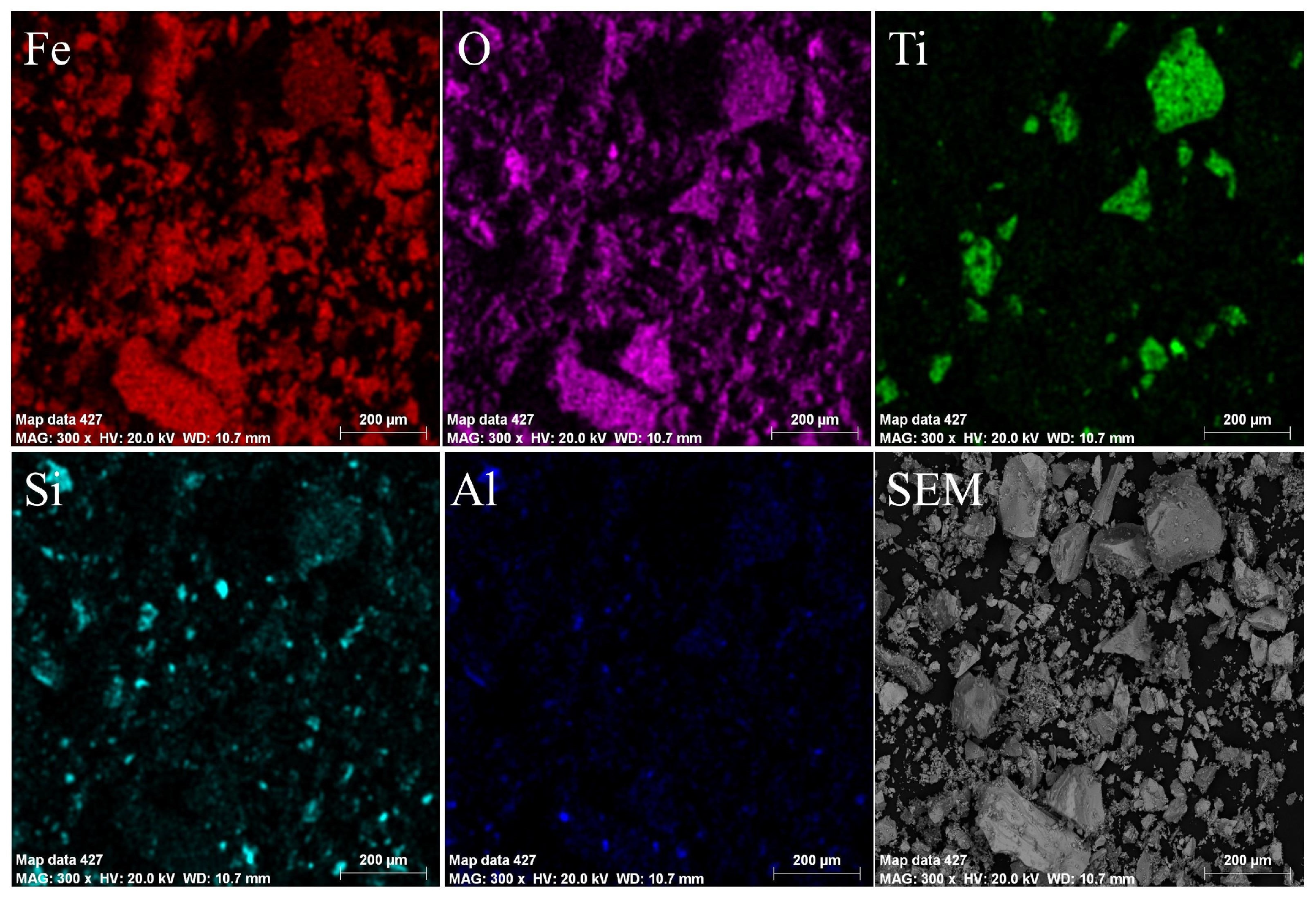
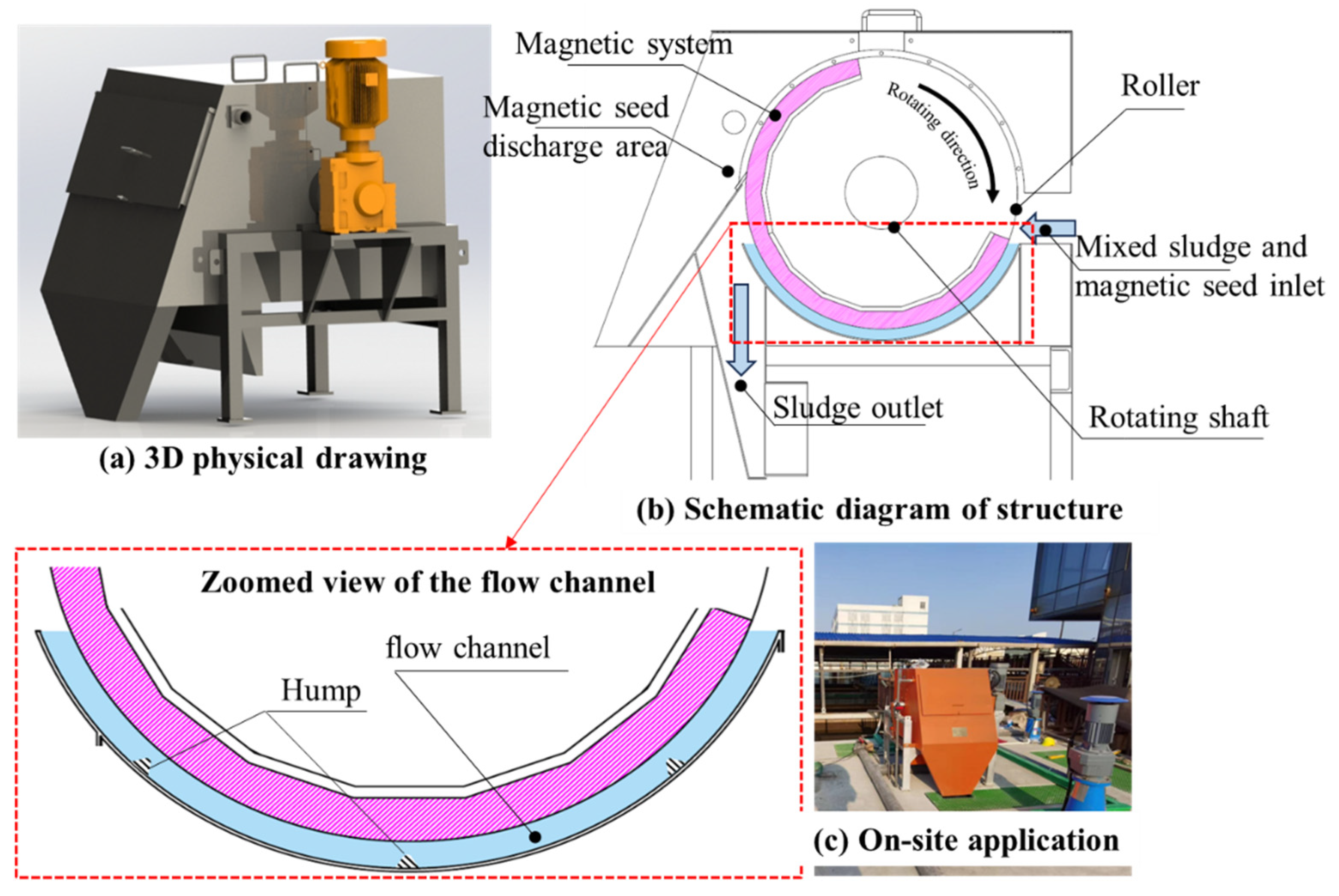
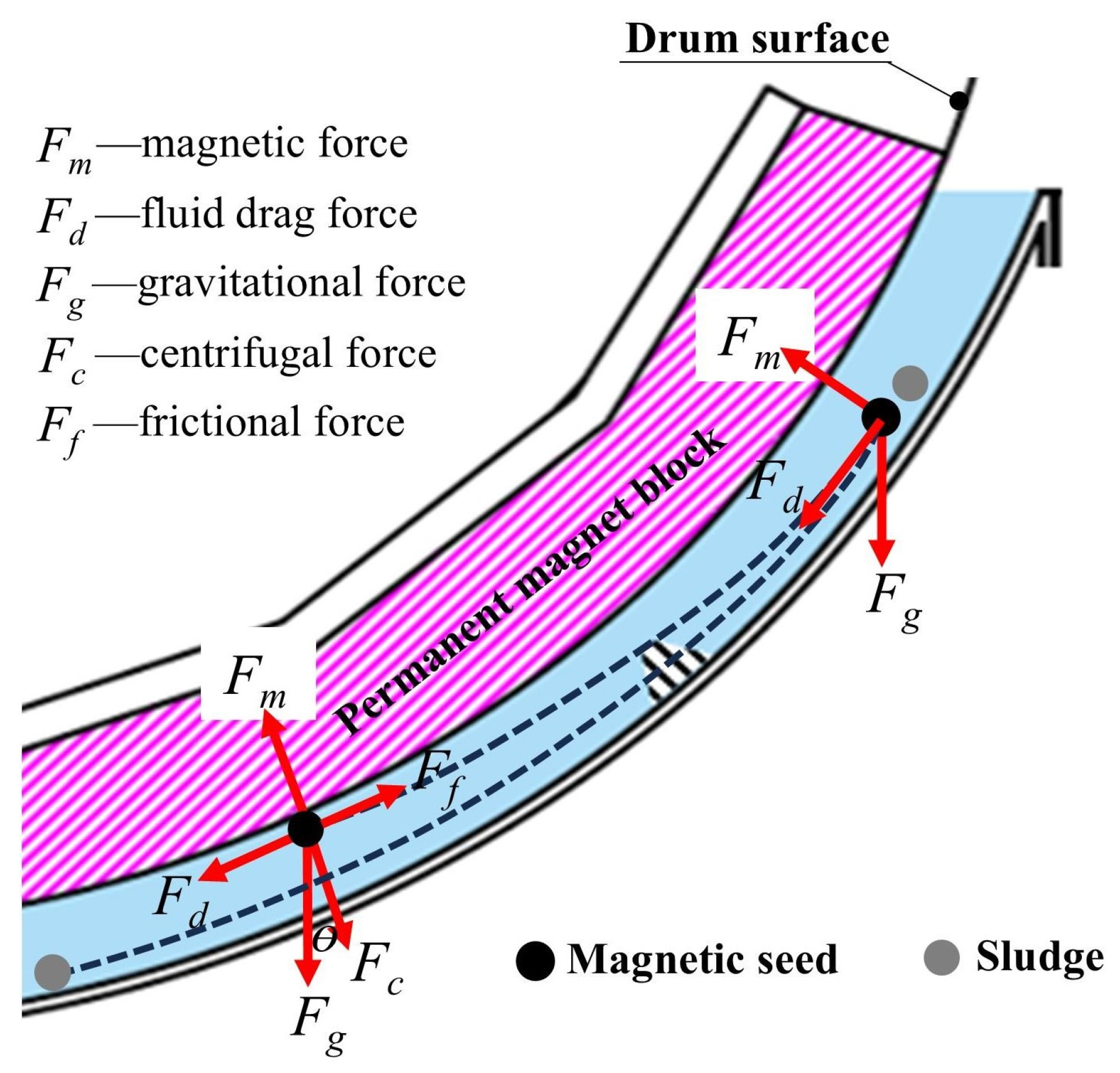
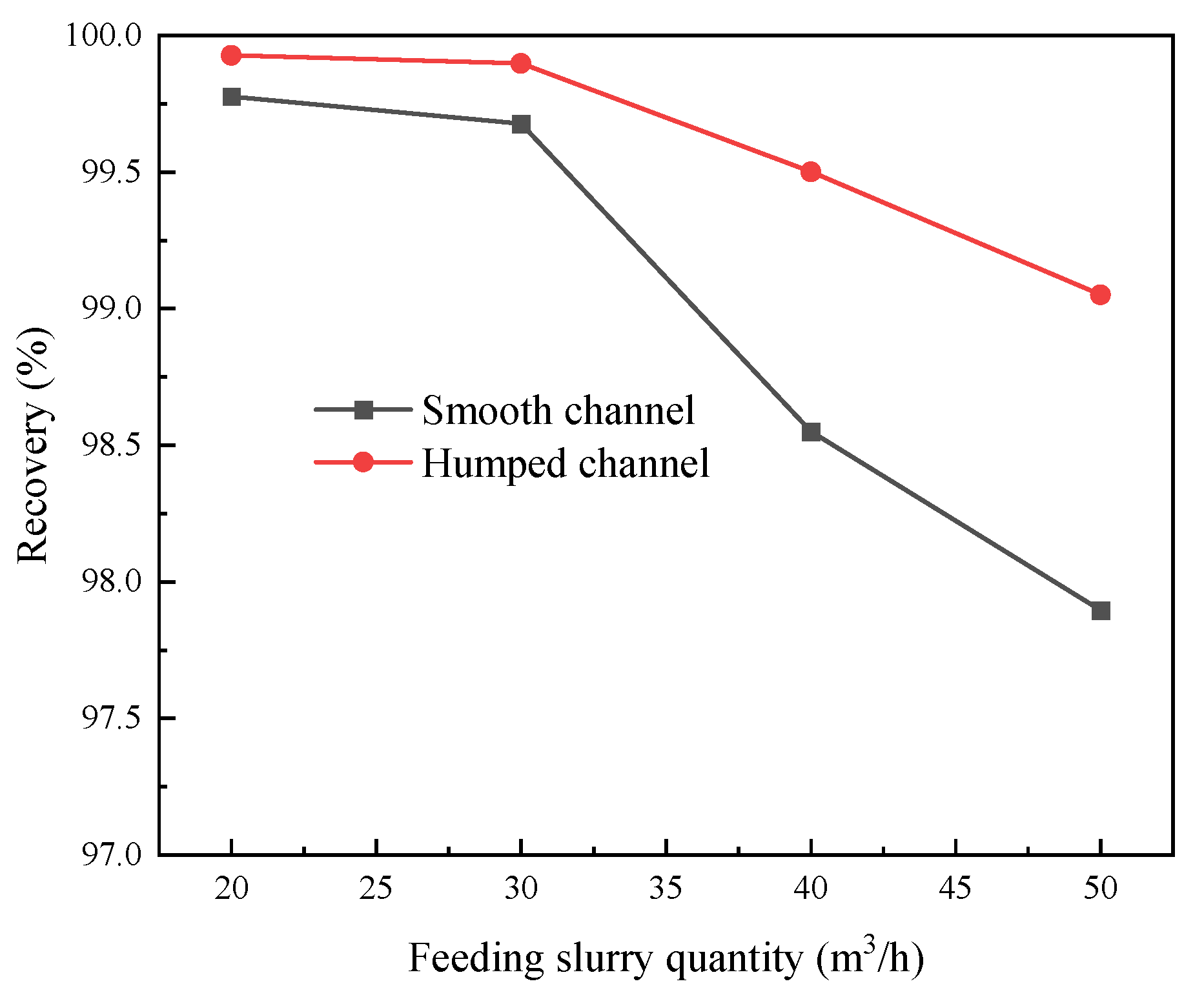
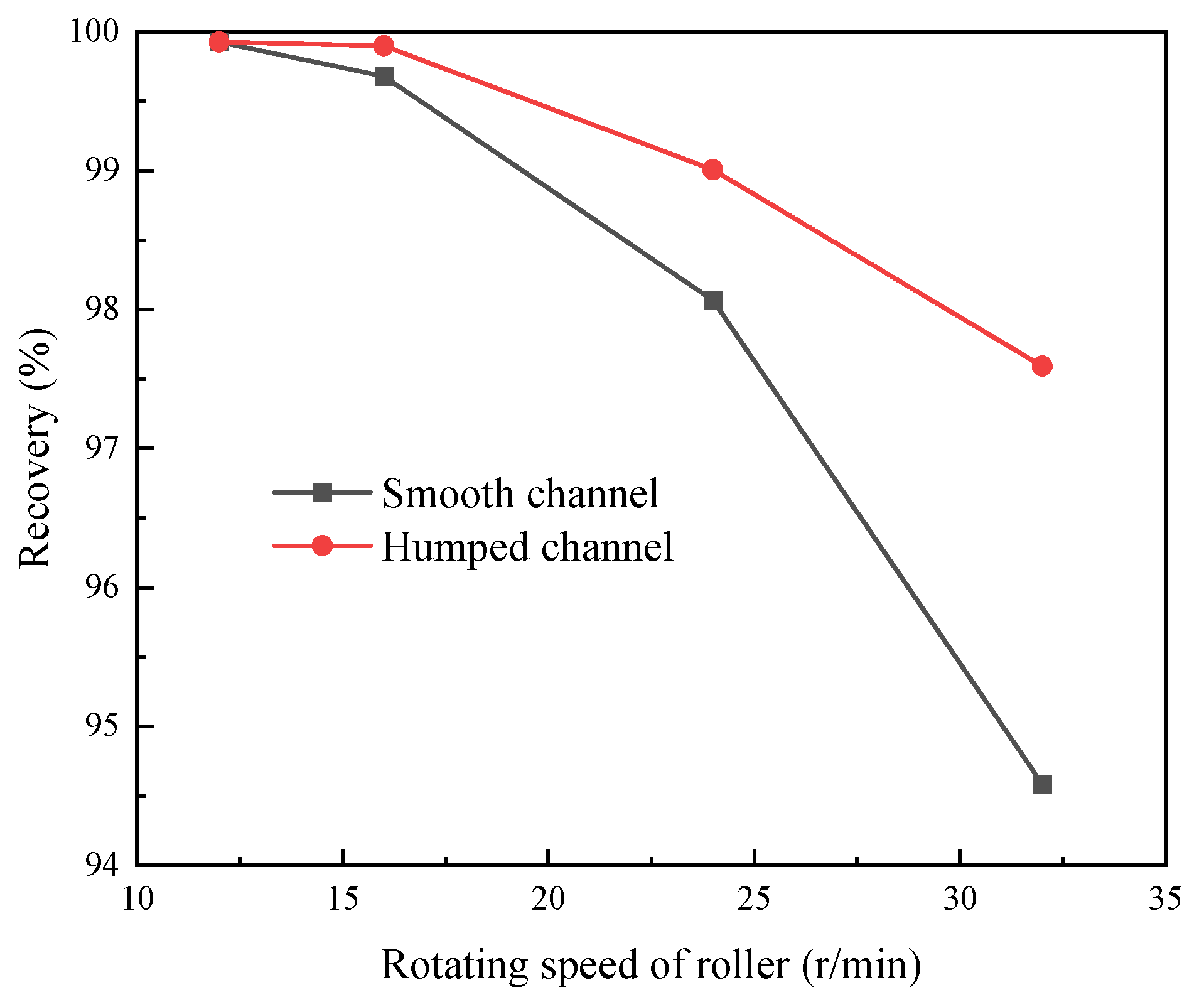
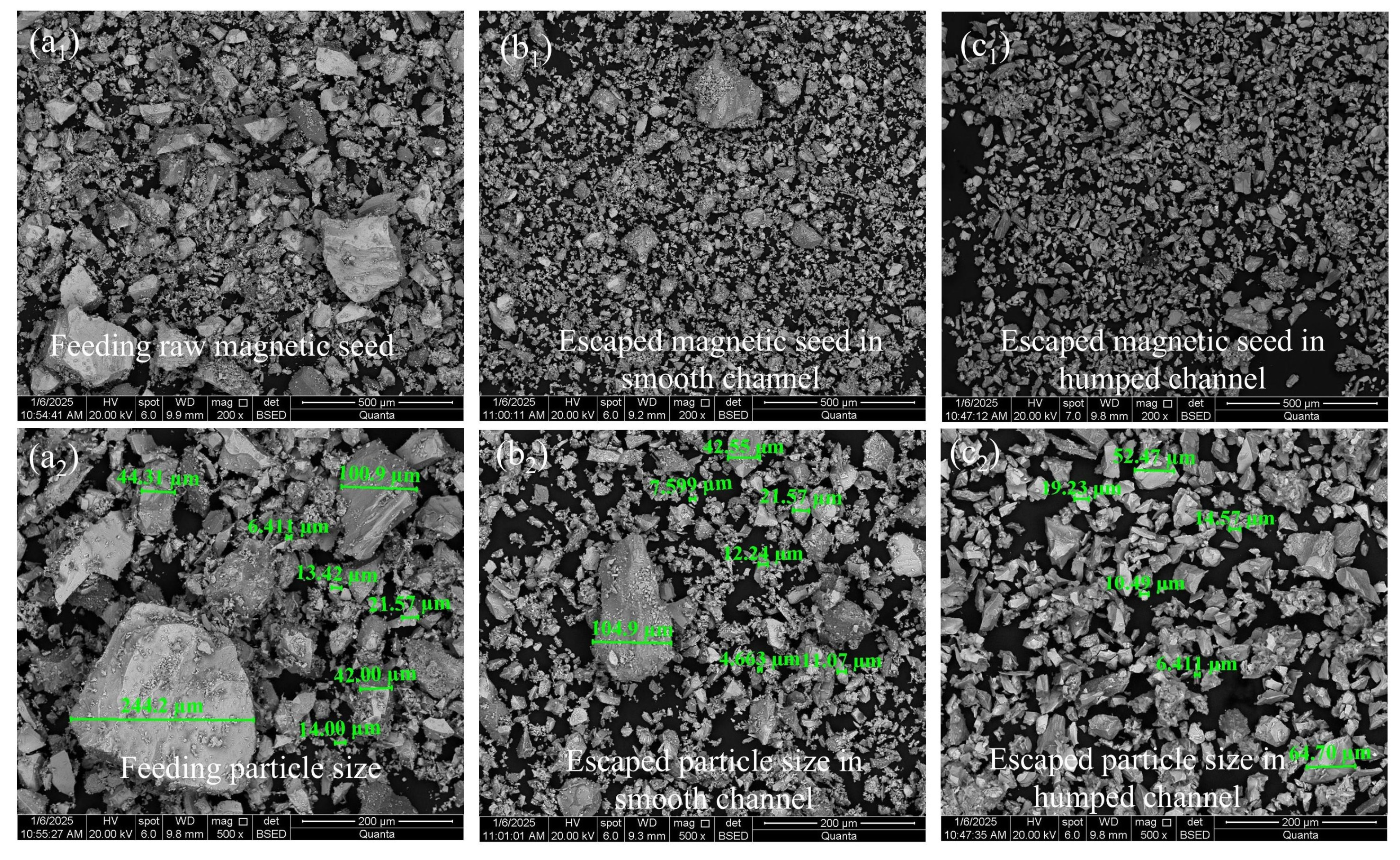
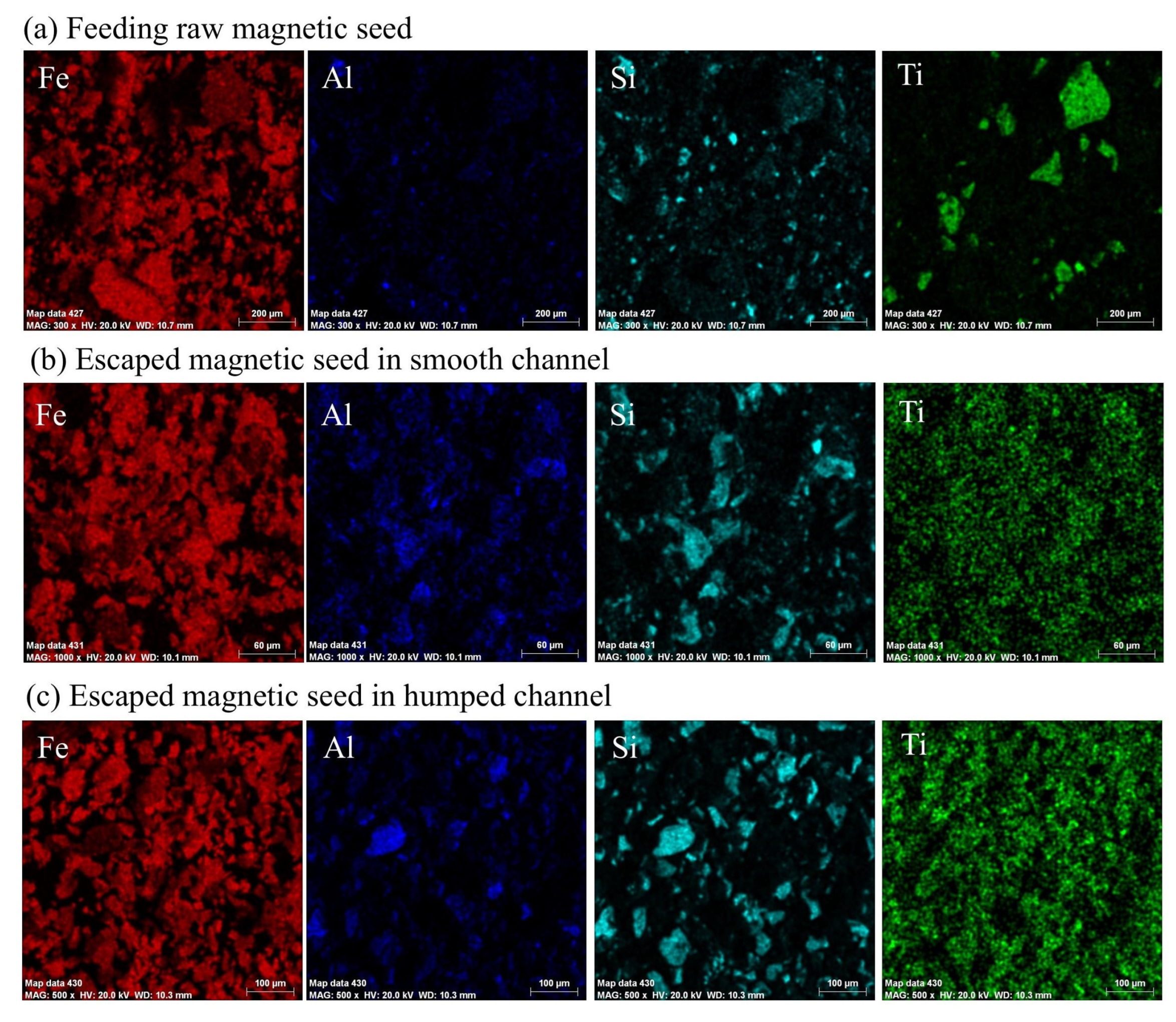
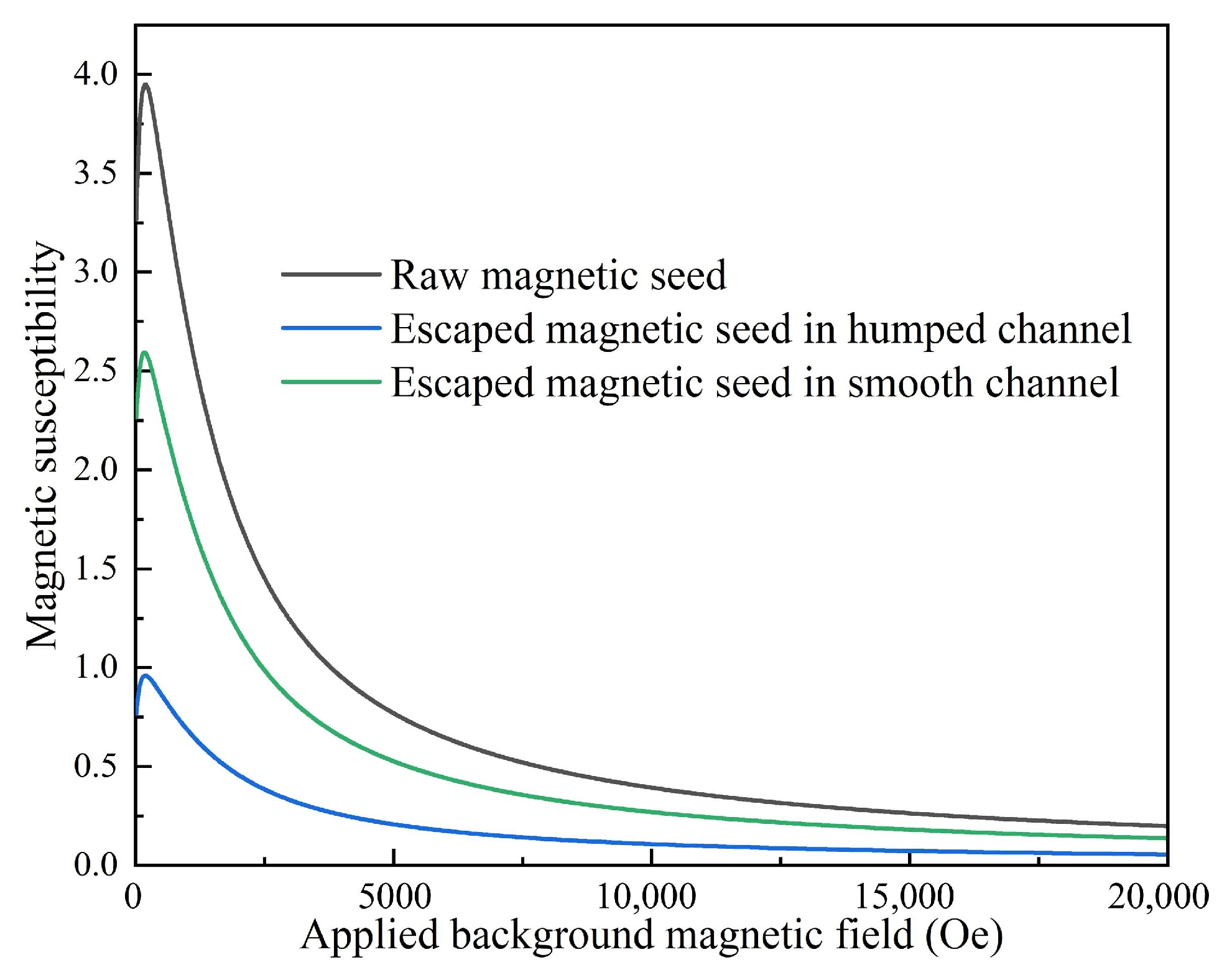

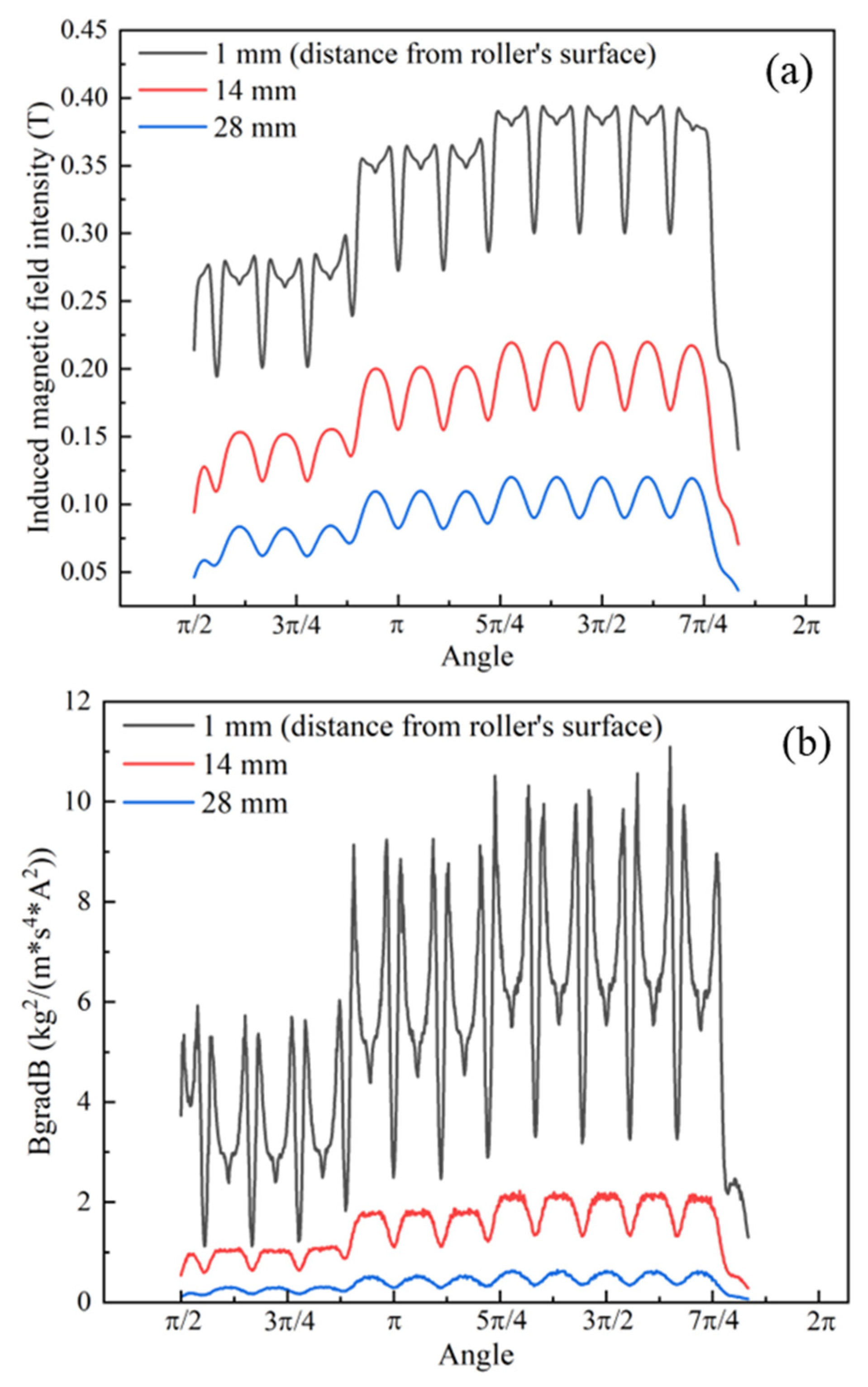
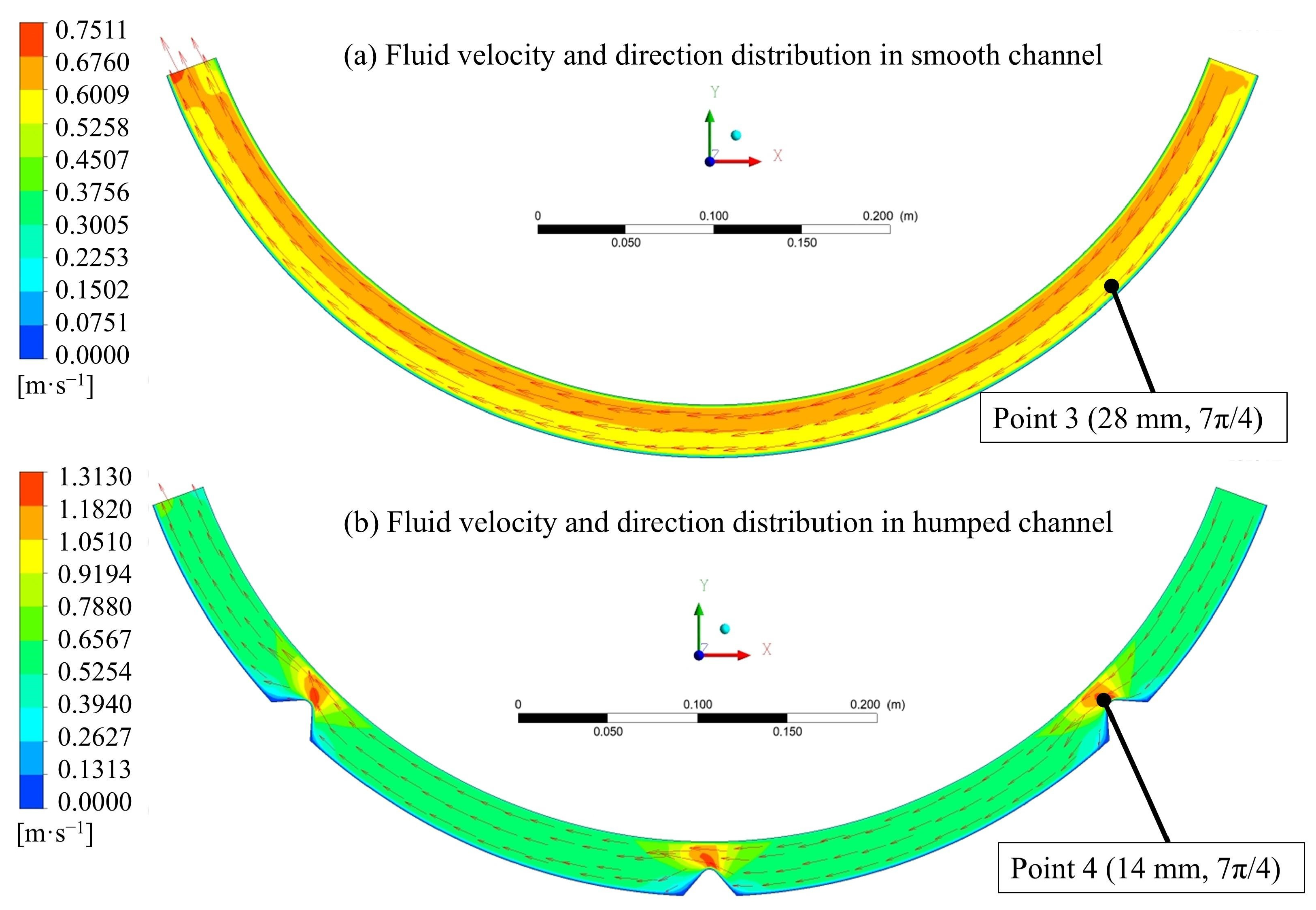
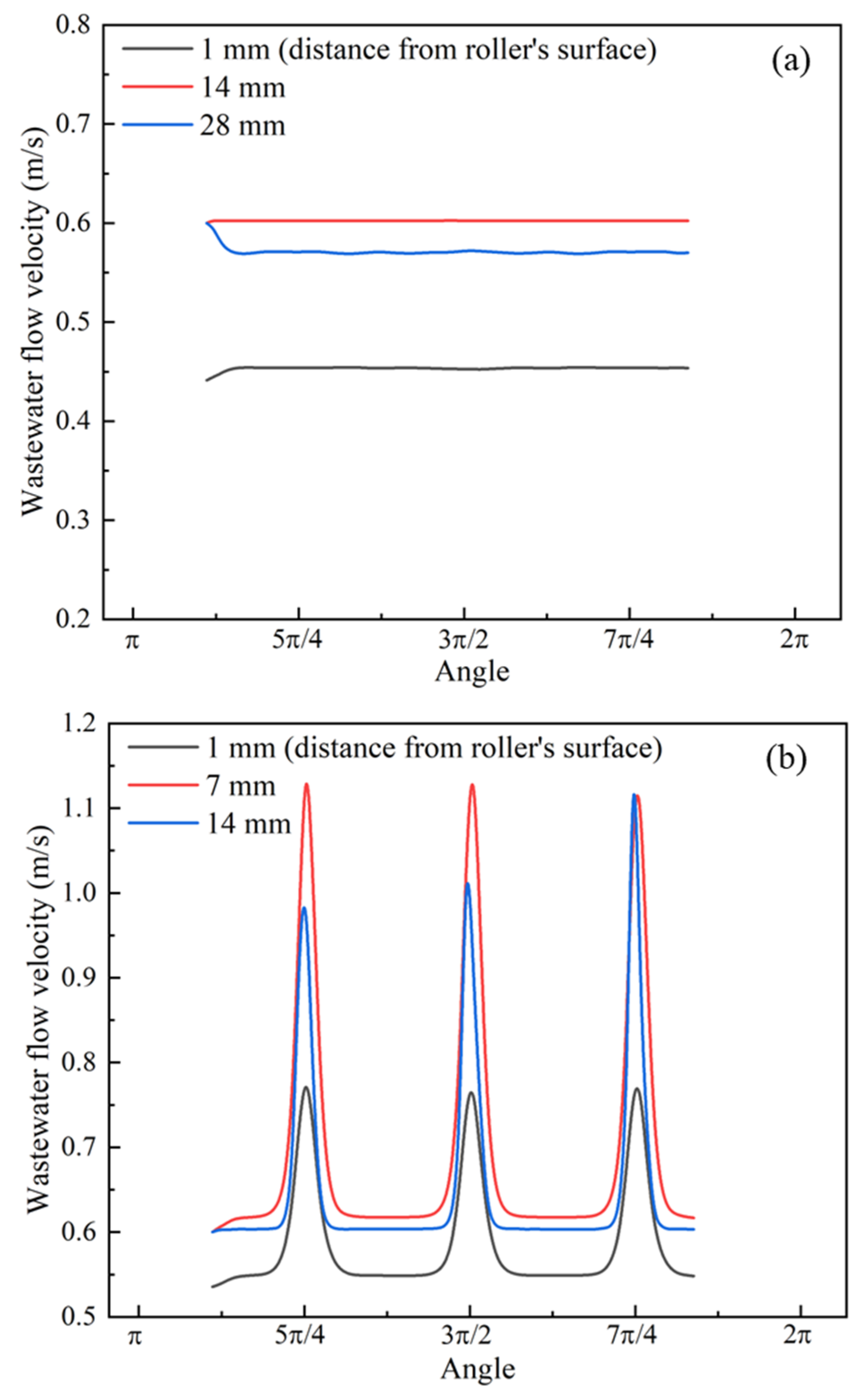
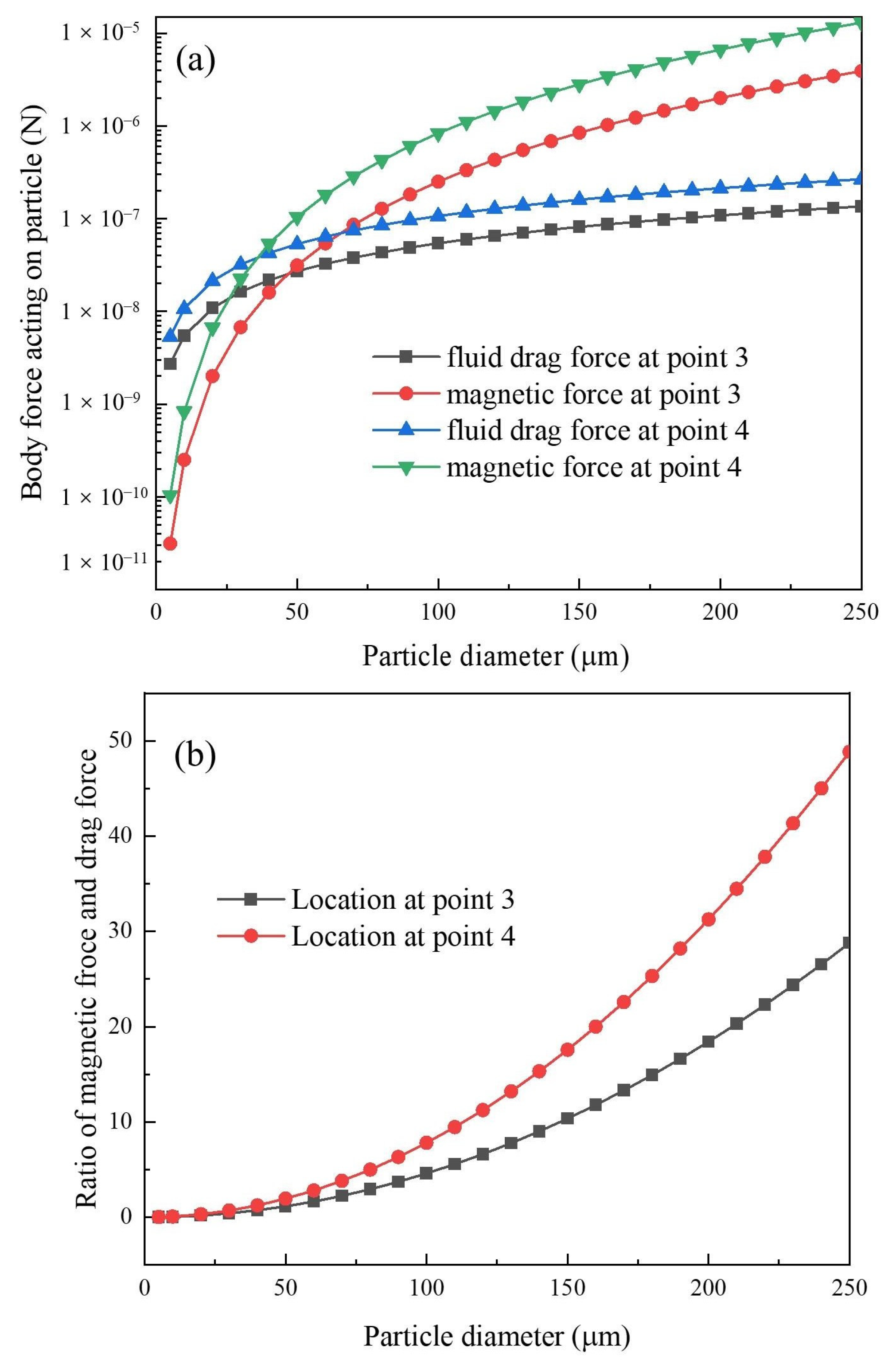
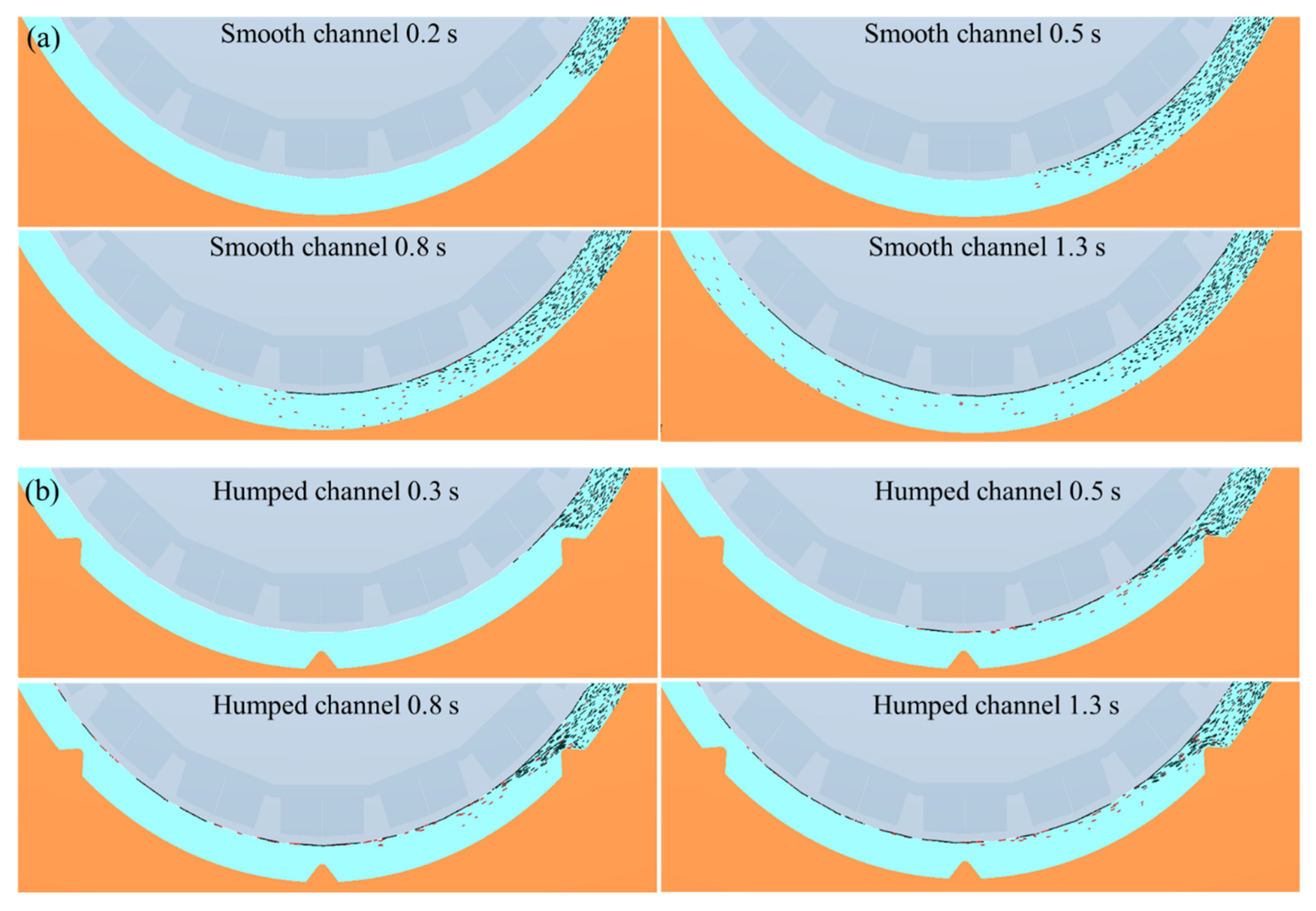
| Parameters | Units | Magnitudes |
|---|---|---|
| Particle diameter (2R) | m | 5–250 × 10−6 |
| Vacuum permeability (μ0) | N/A2 or H/m | 4π × 10−7 |
| Induced magnetic field force (BgradB) | kg2/(m·s4·A2) | 0–11 |
| Magnetic susceptibility of impurity (κ) | dimensionless | 1.0 |
| Viscosity of fluid (η) | Pa·s | 1.01 × 10−3 |
| Flow velocity in the channel (v) | m/s | 0–1.31 |
| Density of impurity (ρP) | kg/m3 | 5.0 × 103 |
| Density of fluid (ρf) | kg/m3 | 1.0 × 103 |
| Radius of roller (a) | m | 0.6 |
| Rotational angular velocity of roller (ω) | rad/s | 0.53π |
| Acceleration due to gravity (g) | m/s2 | 9.8 |
| Parameters | Units | Magnitudes |
|---|---|---|
| Particle diameter (2R) | m | 38 × 10−6 |
| Density of magnetite/impurity (ρP) | kg/m3 | 5.0 × 103 |
| Rotational angular velocity of roller (ω) | rad/s | 0.53π |
| Acceleration due to gravity (g) | m/s2 | 9.8 |
| Surface energy of magnetite/impurity (γ) | J/m3 | 0.05 |
| Shear modulus of magnetite/impurity (G) | Pa | 1 × 109 |
| Young’s modulus of magnetite/impurity (E) | Pa | 2.5 × 109 |
| Magnetic susceptibility of magnetite (κ) | dimensionless | 4.0 |
| Magnetic susceptibility of impurity (κ) | dimensionless | 1.0 |
| Poisson’s ratio of magnetite/impurity (υ) | dimensionless | 0.25 |
| Restitution coefficient of magnetite/impurity (e) | dimensionless | 0.15 |
| Static friction coefficient of magnetite/impurity (fs) | dimensionless | 0.68 |
| Rolling friction coefficient of magnetite/impurity (fr) | dimensionless | 0.05 |
Disclaimer/Publisher’s Note: The statements, opinions and data contained in all publications are solely those of the individual author(s) and contributor(s) and not of MDPI and/or the editor(s). MDPI and/or the editor(s) disclaim responsibility for any injury to people or property resulting from any ideas, methods, instructions or products referred to in the content. |
© 2025 by the authors. Licensee MDPI, Basel, Switzerland. This article is an open access article distributed under the terms and conditions of the Creative Commons Attribution (CC BY) license (https://creativecommons.org/licenses/by/4.0/).
Share and Cite
Xu, S.; Han, H.; Liu, J.; Sun, W.; Qiu, J. Humped Flow Channel in Drum Magnetic Separator Leads to Enhanced Recovery of Magnetic Seeds in Magnetic Flocculation Process. Minerals 2025, 15, 732. https://doi.org/10.3390/min15070732
Xu S, Han H, Liu J, Sun W, Qiu J. Humped Flow Channel in Drum Magnetic Separator Leads to Enhanced Recovery of Magnetic Seeds in Magnetic Flocculation Process. Minerals. 2025; 15(7):732. https://doi.org/10.3390/min15070732
Chicago/Turabian StyleXu, Shaohua, Haisheng Han, Jianguo Liu, Wei Sun, and Jianwei Qiu. 2025. "Humped Flow Channel in Drum Magnetic Separator Leads to Enhanced Recovery of Magnetic Seeds in Magnetic Flocculation Process" Minerals 15, no. 7: 732. https://doi.org/10.3390/min15070732
APA StyleXu, S., Han, H., Liu, J., Sun, W., & Qiu, J. (2025). Humped Flow Channel in Drum Magnetic Separator Leads to Enhanced Recovery of Magnetic Seeds in Magnetic Flocculation Process. Minerals, 15(7), 732. https://doi.org/10.3390/min15070732





